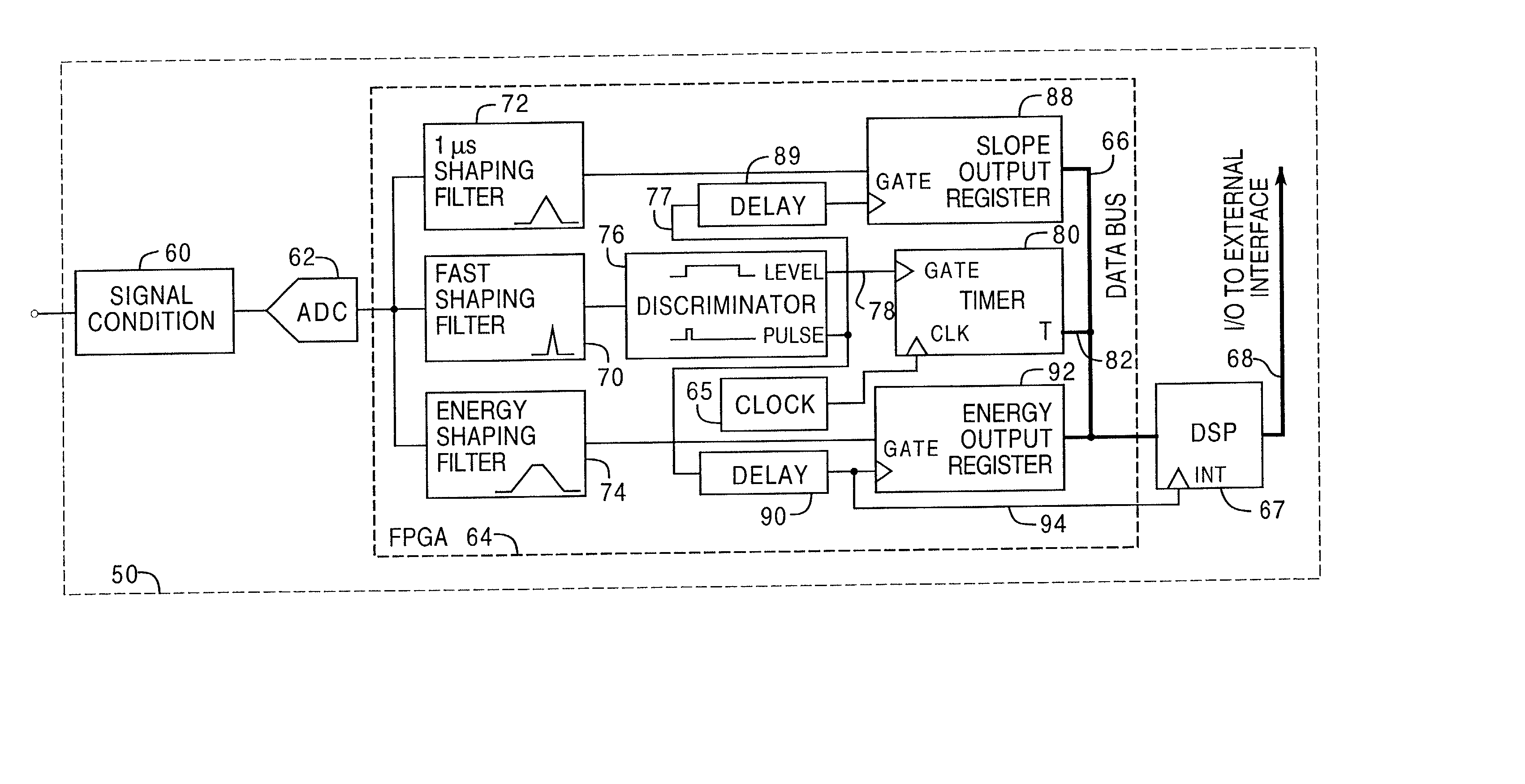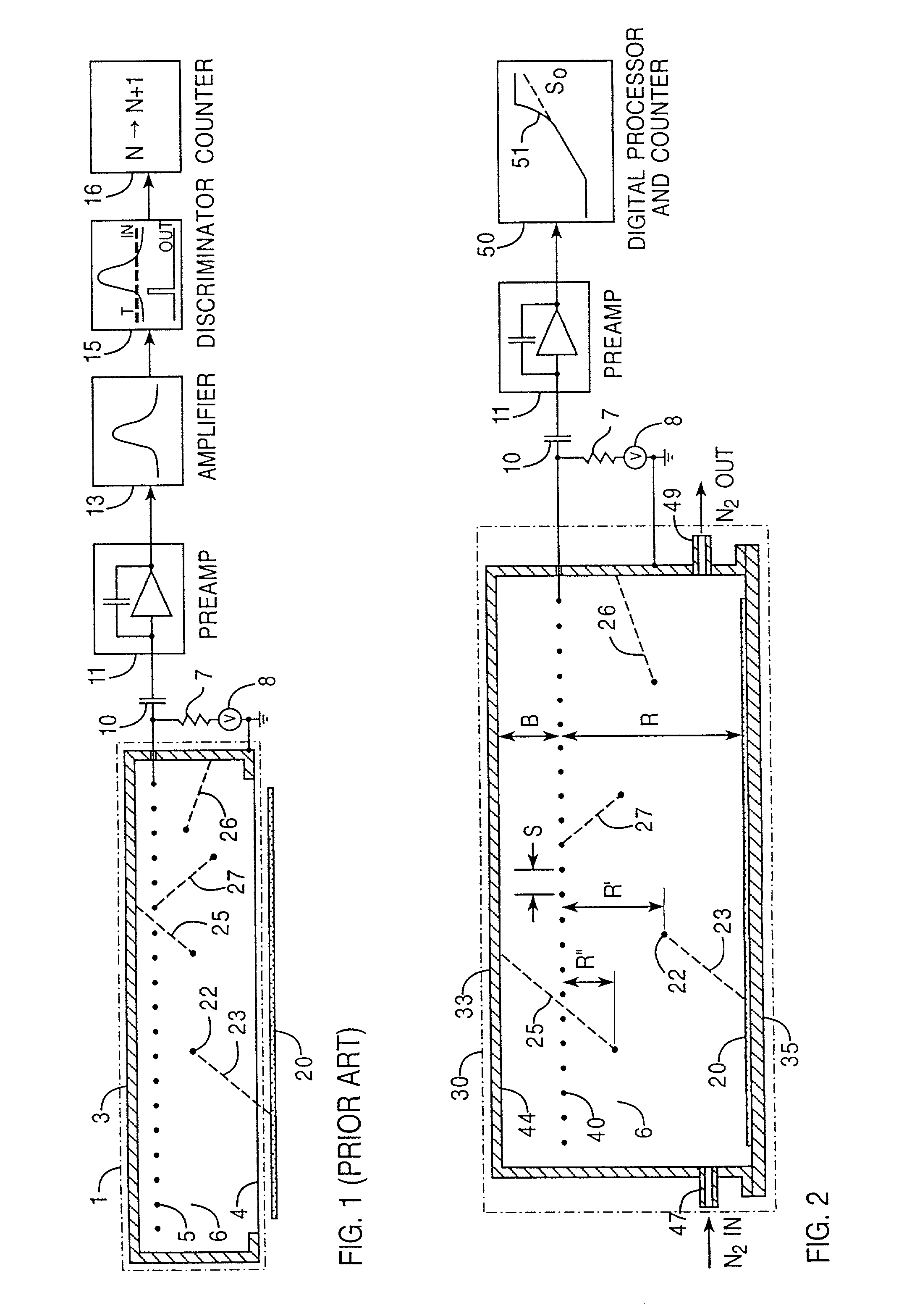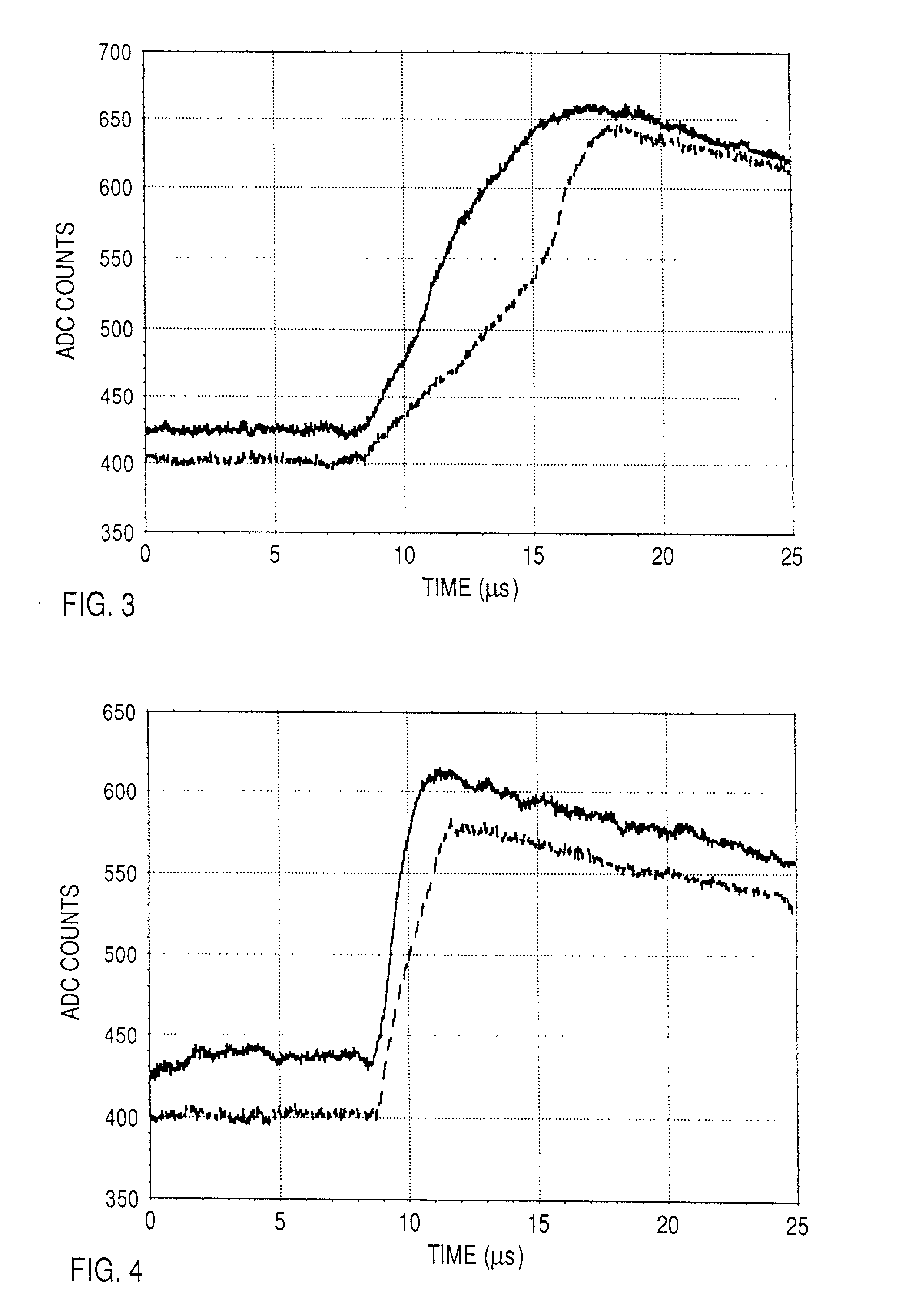Ultra-low background gas-filled alpha counter
a counter and background gas technology, applied in the field of ultra-low background gas-filled alpha counters, can solve the problems of difficult identification of ionization tracks emitted from the counter sidewalls by these techniques
- Summary
- Abstract
- Description
- Claims
- Application Information
AI Technical Summary
Benefits of technology
Problems solved by technology
Method used
Image
Examples
Embodiment Construction
[0049] 1. Introduction
[0050] The invention exploits the differences in preamplifier pulse features that result from collecting ionization tracks generated by alpha particles emitted from different surfaces within the counter, and uses pulse feature analysis to recognize these differences and so distinguish between alpha particles emitted from the sample and "background" particles emitted from the surfaces of the counter itself.
[0051] As a matter of nomenclature, we will use the term "region of emanation" to denote the region within the chamber volume where the ionization track originates. Thus, when an alpha particle is emitted from the sample lying outside the chamber, the region of emanation would be where the alpha particle enters the chamber, e.g., window 4 in FIG. 1. If the sample is inside the chamber, the region of emanation is the sample itself. As mentioned above in connection with the description of the counter of FIG. 1, the sample region is the region of the chamber volu...
PUM
 Login to View More
Login to View More Abstract
Description
Claims
Application Information
 Login to View More
Login to View More - R&D
- Intellectual Property
- Life Sciences
- Materials
- Tech Scout
- Unparalleled Data Quality
- Higher Quality Content
- 60% Fewer Hallucinations
Browse by: Latest US Patents, China's latest patents, Technical Efficacy Thesaurus, Application Domain, Technology Topic, Popular Technical Reports.
© 2025 PatSnap. All rights reserved.Legal|Privacy policy|Modern Slavery Act Transparency Statement|Sitemap|About US| Contact US: help@patsnap.com



